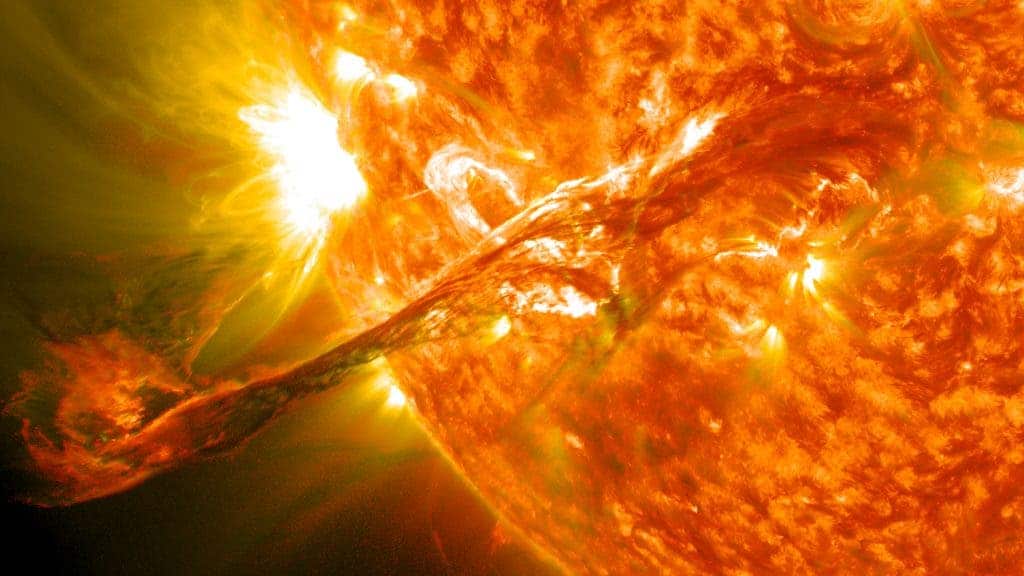A chance discovery has provided experimental evidence that stars may generate sound. While he was examining the interaction of an ultra-intense laser with a plasma target, John Parsley from the University of York found that interfering plasma generates a series of pressure pulses – in other words, sounds.
Parsley and his team were studying plasma interactions on the surface of stars by applying an ultra-intense laser beam to a plasma target when they observed something rather unexpected. In the trillionth of a second when the laser strikes, plasma rapidly flows from areas of high density to areas of low density, piling up at the interface between the high and low density regions, generating pressure waves.
While this experimental setup seems rather unique, there is one place where this takes place: on the surface of stars. Parsley said:
“One of the few locations in nature where we believe this effect would occur is at the surface of stars. When they are accumulating new material stars could generate sound in a very similar manner to that which we observed in the laboratory — so the stars might be singing — but, since sound cannot propagate through the vacuum of space, no one can hear them.”
But even if you could hear the sounds… you couldn’t hear it. The sounds come out at very high frequencies, nearly a trillion hertz – almost the highest possible frequency for this type of material. To say that humans, as well as bats or dolphins can’t hear it is almost an understatement – the frequency is six million times higher than what can be heard by any mammal.
Dr Alex Robinson from the Plasma Physics Group at STFC’s Central Laser Facility took things even further, developing a numerical model to generate acoustic waves for the experiment. He said:
“It was initially hard to determine the origin of the acoustic signals, but our model produced results that compared favorably with the wavelength shifts observed in the experiment. This showed that we had discovered a new way of generating sound from fluid flows. Similar situations could occur in plasma flowing around stars”
Journal Reference: Amitava Adak, A. P. L. Robinson, Prashant Kumar Singh, Gourab Chatterjee, Amit D. Lad, John Pasley, G. Ravindra Kumar. Terahertz Acoustics in Hot Dense Laser Plasmas. Physical Review Letters, 2015; 114 (11) DOI:10.1103/PhysRevLett.114.115001










